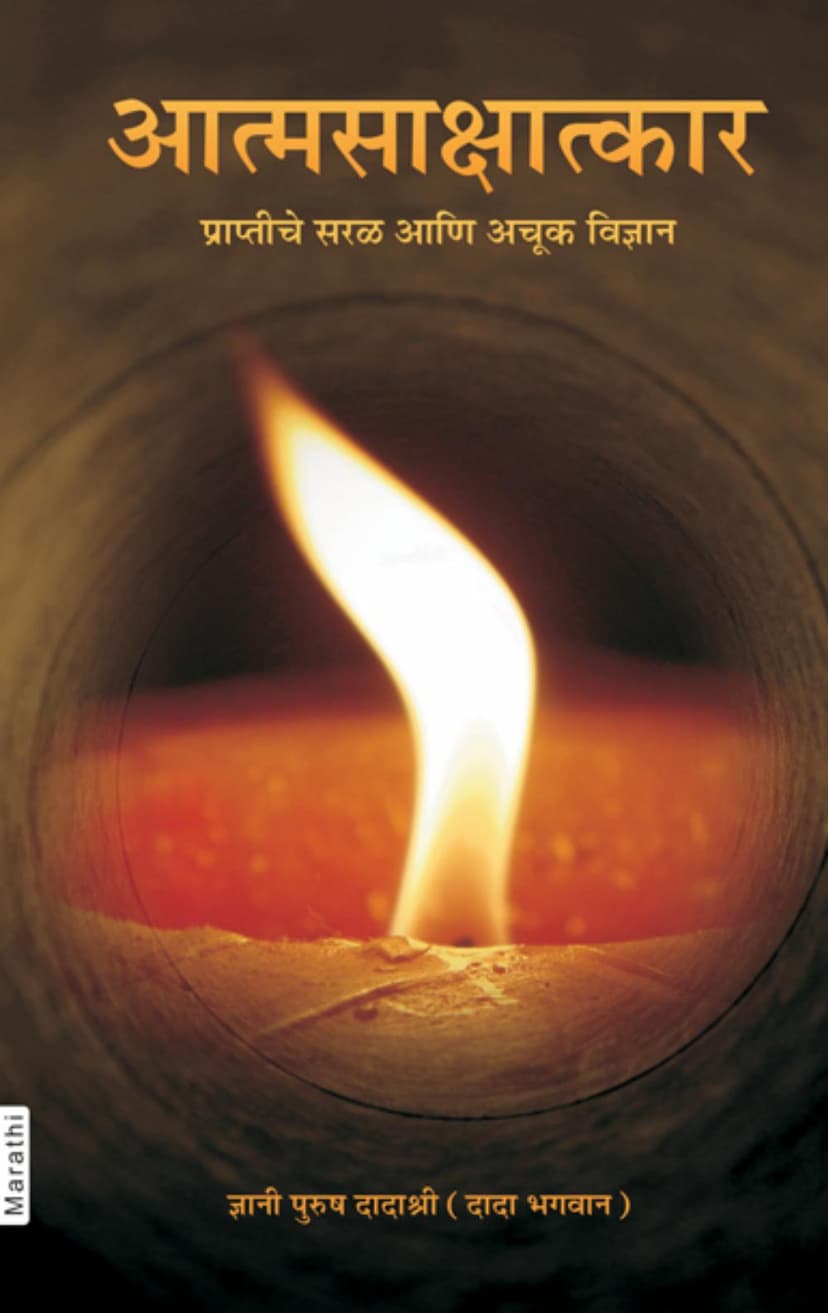Simple And Effective Science For Self Realization Marathi
Added to library: September 2, 2025

Summary
This document is a Marathi translation of key teachings of Dada Bhagwan, a spiritual teacher from Gujarat, India, focused on self-realization. The core message revolves around an "Akram Vigyan" (non-sequential science) which offers a direct and simple path to realizing one's true Self, the Soul (Atma).
Here's a comprehensive summary of the key concepts presented:
1. Who is Dada Bhagwan?
- The Divine Manifestation: Dada Bhagwan is described as the fully manifested divine consciousness within the physical body of Mr. Ambalal Mooljibhai Patel (A.M. Patel). This manifestation occurred naturally in June 1958.
- The "Gnani Purush": A.M. Patel (who is referred to as "Gnani Purush" or the Knower) is the medium through whom Dada Bhagwan’s divine knowledge is conveyed. He clarifies that the visible person is A.M. Patel, but the divine essence within is Dada Bhagwan, the Lord of the entire universe.
- The "Akram" Path: Dada Bhagwan's teachings emphasize an "Akram" or "non-sequential" path to self-realization. This is contrasted with the "kramik" or sequential path, which involves gradual progress through various spiritual practices over many lifetimes. The Akram path is likened to a lift, offering a shortcut to the goal.
- Integrity in Business: A.M. Patel lived by the principle of having religion in business, but not business in religion. He never accepted money from anyone, instead using his business profits to fund spiritual journeys for his followers.
2. The Goal of Human Life and Self-Realization
- Purposeful Existence: The text stresses the rarity of human birth and the importance of having a clear goal. A life without a goal is considered meaningless.
- Two Types of Goals:
- Worldly Goal: To live in the world without causing suffering to any living being.
- Ultimate Goal: To attain Self-realization (Moksha) through the grace of a Gnani Purush.
- Moksha (Liberation): Moksha is explained in two stages:
- First Moksha: Experiencing happiness even amidst worldly troubles and maintaining equanimity (samadhi) in difficult situations. This can be attained in this lifetime.
- Ultimate Moksha: Liberation from the cycle of birth and death after the physical body is shed.
- The Nature of Happiness: True happiness is eternal and found within the Self (Atma). Temporary pleasures derived from external objects lead to further entanglement and are ultimately unsatisfactory.
- "I" and "My" are Separate: A fundamental teaching is the understanding that the true Self ("I") is separate from one's possessions, body, mind, intellect, ego ("My"). By separating "My" from "I," one realizes the true Self. The "I" is the Pure Soul, and "My" refers to everything else, which is ultimately illusionary (maya).
3. The Path to Self-Realization
- Beyond Rituals and Penance: The text clarifies that external penances, rituals, and mantra chanting may bring temporary peace or worldly happiness but do not lead to Moksha. Moksha is achieved through inner penance (antar-tapa) and knowledge.
- The Importance of Knowledge: Ignorance is the cause of bondage, and knowledge is the cause of liberation. True knowledge is beyond sensory perception and is described as "atindriya gnan" (transcendental knowledge).
- The Role of the Gnani Purush: Self-realization is not something that can be achieved solely through self-effort or by reading scriptures. It requires the grace and guidance of a Gnani Purush who can provide the necessary knowledge and spiritual insight.
- "Gyanvidhi" (Knowledge Ceremony): This is a special scientific process conducted by a Gnani Purush, typically lasting about two hours. It involves separating the Soul from the non-Self (body, mind, etc.) and instilling the direct experience of being the Pure Soul. This process burns karmic impurities and grants "divine sight."
4. Key Principles and Practices:
- "I am the Pure Soul": This is the foundational realization that needs to be attained.
- "Adjust Everywhere": This is presented as a vital principle for navigating the world and maintaining inner peace. It involves adapting to all situations and people without complaint or resistance.
- "Avoid Conflict": Engaging in conflict or arguments is discouraged, as it leads to mutual loss and hinders spiritual progress. Instead, one should seek to resolve disputes peacefully and learn from them.
- "What Happened is Justice": Understanding that all events are governed by the laws of nature and karma. Blaming others or seeking external justice is futile. Accepting events as they are is the path to liberation.
- "Repentance (Pratikraman)": A practice of acknowledging one's mistakes and seeking forgiveness from the Self (the Pure Soul). This helps in washing away karmic impurities.
- The "Five Commands" (Agya): After receiving self-knowledge, followers are instructed to follow five specific commands. These commands act as protection for the gained knowledge and help in preventing new karma.
- Satsang (Association with the Self): Regular association with the Gnani Purush, through physical presence or by reading their books and magazines, is crucial for nurturing the spiritual progress initiated by the Gyanvidhi.
5. The Nature of Reality and Karma:
- Karma: Karma is explained as the result of past actions. While some karma is like steam or water and is destroyed by self-knowledge, frozen karma (like ice) must be experienced.
- The "Knower's" Perspective: The Gnani Purush sees the world as faultless and everyone as innocent. This is because they understand the underlying laws of nature and karma, and recognize that individuals act based on their past karmic accounts.
- "The Sufferer is at Fault": A profound concept is that the person who experiences suffering is the one at fault, not the one who seemingly causes it. The latter is merely an instrument of the former's karma.
In essence, the book "Simple and Effective Science For Self Realization" by Dada Bhagwan, presented as "Akram Vigyan," offers a practical and direct path to spiritual liberation by shifting one's identity from the ego-bound self to the Pure Soul, facilitated by the grace of a Self-realized being (Gnani Purush) and guided by principles of love, adjustment, and acceptance.